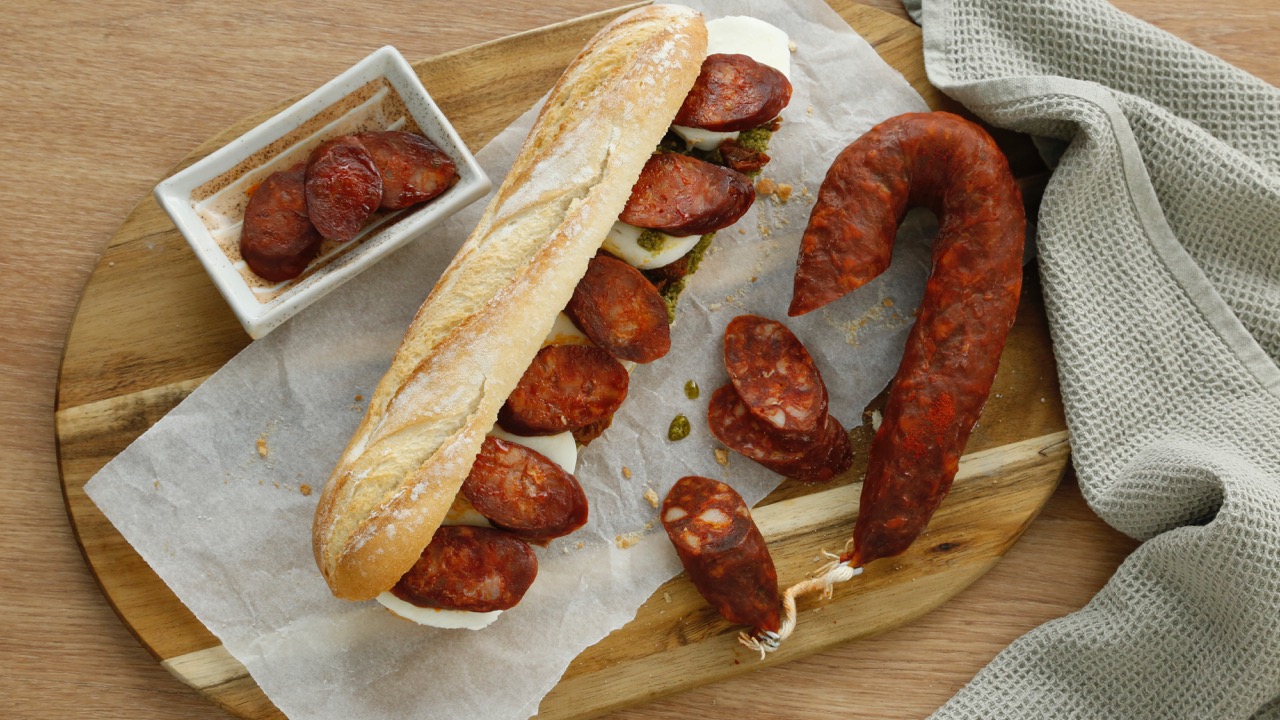The process of making Riojan chorizo, like that of most of the sausages produced in Spain, is an ancestral tradition that has been handed down from father to son for generations. A family ritual in which friends and neighbors also participated and which, today, continues to be fundamental. The PGI Chorizo Riojano audits the different processes of mincing, kneading, stuffing and drying to guarantee all the flavor, quality and history of this emblematic product.
A centuries-old tradition
The preparation of chorizo is a ritual that many families continue to perform year after year as a real event. Depending on the area, each family uses different species, recipes of yesteryear that are part of the family history and are not revealed.
Preparations begin early, with the first light of dawn. It is winter and the family gathers around the fireplace with a good wood fire to warm up. They begin by heating the water and preparing the ingredients that will be needed during the day. In the case of Riojan chorizo, lean pork, paprika, fine dry salt and garlic, and natural pork casings for stuffing.
The first thing to do is to chop the loin and the bacon in small portions, about 5-8 mm, salt it and knead the mixture. Then, chop the garlic,dilute it in water and add it little by little to the dough, without stopping kneading at any time. The paprika is dissolved in water and is also added to this mixture, kneading until it is homogeneous.
Once the mixture is prepared, it is covered with a cloth and let it rest for one night. It is the moment to rest and replenish strength for the next day.
A very modern flavor but with tradition
The next morning, with the mixture already rested and the flavors well blended, it is time to introduce it into the pork casings. These have to be thin, about 40-50 mm in caliber. Before starting, the flavors are checked and the last adjustments are made with the spices. Once the casings are filled, the two ends are tied together, punctured to let the air out and hung at one end.
Although it may seem a quick job, it usually takes a few hours until all the chorizo is finally hanging. Once the chorizos are tied, they are exposed to the air in a natural environment, choosing suitable places based on their temperature and humidity characteristics.
And, from here on, all that remains is to wait. The final touch will be given by time. During the maturation period, the product dries out and acquires a firmer texture, while the characteristic aroma develops, with hints of garlic and paprika.
In order to be consumed, it must be hung for a month, although it can also be consumed fresh.
The important thing is to achieve that point in which the sausage has a firm but juicy texture and that specific, intense and penetrating flavor. Once this is achieved, the only thing left to do is to enjoy these traditional chorizos with a good glass of wine from La Rioja and a good loaf of bread.
This is precisely the elaboration process, passed down from generation to generation, that the companies belonging to IGP Chorizo Riojanos follow for the elaboration of their products. A traditional process that guarantees all its flavor and texture and makes this product an ideal food for consumption both fried or grilled,, and as a condiment very suitable for exquisite stews.





